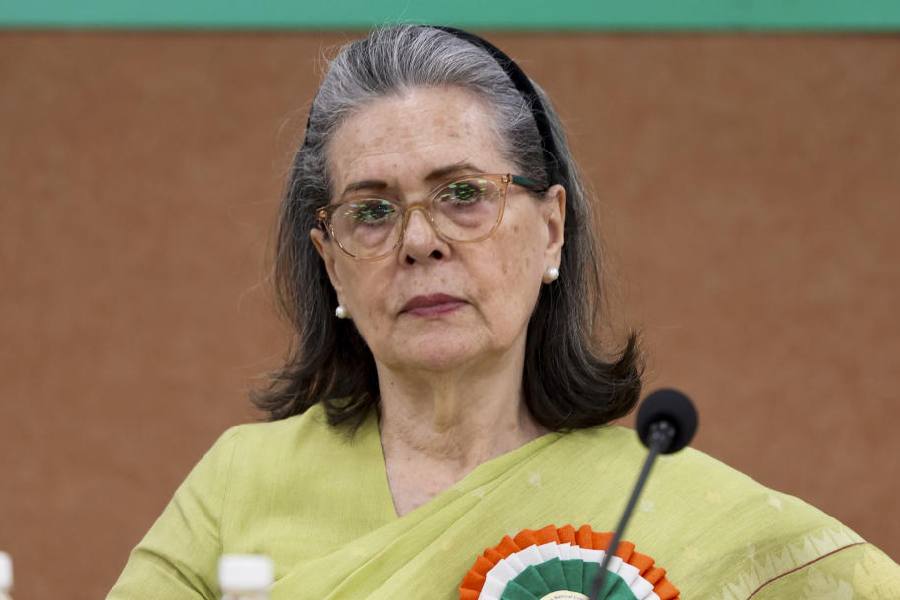 |
A single pencil and three A4 sheets are all that Pankaj Joshi needs to portray the end stages of an obese star. He’s spent the past two decades exploring the final moments of stars through pure mathematics scribbled on sheets of paper or on blackboards.
Now Joshi and two other Indian physicists have predicted a new route to stellar death. Their calculations show that a star much heavier than the sun will end its life through an exploding fireball, a monstrous burst of energy that lasts just a few seconds and leaves behind virtually nothing but empty space.
Such stellar death throes might be more than mere celestial fireworks.
Joshi, a theoretical astrophysicist at the Tata Institute of Fundamental Research (TIFR) in Mumbai, and his colleagues have claimed these eruptions might be novel signatures of quantum gravity ? a seven-decade old, yet still elusive concept, chased by Albert Einstein and generations of physicists since then.
Quantum gravity represents an attempt to reconcile two of the most successful theories of physics ? Einstein’s general relativity theory and quantum mechanics. Independently, they work perfectly well, but they don’t seem to fit in with each other, which is disconcerting for physicists because they’re convinced both are correct.
Einstein’s elegant general theory of relativity connects gravity with space and time. Quantum mechanics describes the submicroscopic world ? the antics of electrons in computers, the behaviour of photons in lasers, or even steam inside a pressure cooker. And quantum mechanics explains only three of the four basic forces of nature ? the strong and the weak force that dominate the subatomic world and the electromagnetic force. Researchers have been struggling to find mathematical methods to wed gravity to quantum mechanics ? and unify all forces.
Now borrowing some clever mathemathics developed earlier by other scientists, Joshi has applied a theory of quantum gravity to dying stars. “In the final stages of stellar death, the density of matter and the effects of gravity inside the star are extreme. In such an environment, quantum effects dominate and we can study the effect of quantum gravity”' Joshi said. He worked with his student Rituparno Goswami, now a post-doctoral student at the University of Alberta in Canada, and Parampreet Singh, a post-doctoral student at Pennsylvania State University in the US.
Joshi views the end stage of stars as a mind laboratory for theoretical astrophysicists.
 |
Mass is the key
The ultimate fate of stars lies in their masses. In four or five billion years, lightweight stars such as the sun cool down. Eventually when all their nuclear fuel is exhausted, such stars will shrink and end up as cold, dark rocks. Stars five times or even more massive than the sun don’t get such permanent quiescence. A massive star goes into a state of irreversible collapse. Gravity pulls all its matter towards its centre, creating a region of unimaginably high values of density, or a black hole, an object whose high gravity does not even allow light to escape.
Black holes that gobble up all matter that happens to approach it make fascinating science fiction, but they pose major challenges to classical physics. The centre of a black hole would have infinite density. There is no answer to where all the matter inside a black hole ends up ? although some calculations suggest that it might end up in another universe.
“Physics breaks down inside black holes,” said Naresh Dadich, director of the Inter-University Centre for Astronomy and Astrophysics (IUCAA) in Pune. “We need new theories to solve the puzzle of black holes.”
However, according to existing theories, depending on how matter is distributed within a star’s interior, a collapsing star might also end up as a “naked singularity”, an exotic object of extreme high density and gravity comparable to a black hole. But naked singularities are potentially observable because they allow light to escape.
Joshi, Goswami and Singh applied mathematics called loop quantum gravity to collapsing stars. “We calculated how loop quantum gravity influences the interior of a collapsing star as it shrinks as its density and gravitational effects grow,” Joshi said.
 |
The calculations, just published in the journal Physical Review Letters, suggest that in the very final moments of stellar collapse, there is a strong and rapid emission from the star, a stellar explosion in which all matter from the star is ejected in a few seconds. The results imply that loop quantum gravity prevents the formation of naked singularities. Instead, the star undergoes a temporary dimming for a few seconds just before its final burst.
“When we started our calculations, we had no idea the result would be such a dramatic dispersion of all its matter,” said team-member Goswami, who had studied physics at the Indian Institute of Technology in Kharagpur before joining TIFR in 1999 to pursue a doctorate. These results might provide a stronger theoretical foundation for unexplained explosions that routinely occur throughout the cosmos, he said.
Quantum gravity
“This work is significant for it adds a new signature to the list of observable predictions of quantum gravity,” said Abhay Ashtekar, director, Institute for Gravitational Physics and Geometry at Pennsylvania State University. Loop quantum gravity owes its origins to Ashtekar’s initial attempts to unify gravity with quantum mechanics.
In 1986, while at Syracuse University in the US, Ashtekar had introduced mathematical terms that came to be known as the Ashtekar variables to simplify Einstein’s equations of general relativity. “In general relativity, the gravitational field is coded in the very geometry of space time,” Ashtekar told KNOWHOW. “Loop quantum gravity elevates this coding to quantum gravity. Everything, including geometry, is quantum mechanical by birth. However, like general relativity, loop quantum gravity does not have an underlying principle leading to natural unification of all forces.”
The explosive stellar burst described by Joshi is not the first prediction of quantum gravity. Nor is the concept of a star exploding at the end of its life entirely new.
 |
Five years ago, astrophysicist Dadich, collaborating with Joshi and another cosmologist Roy Maartens at the Institute of Cosmology and Gravitation in the UK, had shown that even without a quantum gravity theory, stars might explode just before turning into black holes. In fact, their calculations could be used to argue that gamma ray bursts ? the most powerful explosions known so far in the universe ? might actually be the end-of-life bursts of massive stars. “What we observe as gamma ray bursts might be the birth cries of black holes,” said Dadich.
New calculations
Ashtekar points out that in the cosmological context, loop quantum gravity has delivered observable predictions. Two years ago, Shinji Tsujikawa and Roy Maartens at the Institute of Cosmology and Gravitation and Singh, then a student at IUCAA, used loop quantum gravity to explain certain features of the cosmic microwave background radiation, an all-pervasive afterglow of the ‘Big Bang’ that gave birth to the universe.
The latest work by Joshi and his colleagues represents the first application of quantum gravity to collapsing stars. “I think it is important to remember that these results emerge under very special circumstances,” Dadich said. The new calculations that predict exploding fireballs instead of naked singularities are made under certain assumptions and approximations.
The distinct signature of the burst is the dimming of the star followed by a rapid and dramatic ejection of matter. With instruments sensitive enough to detect such changes in the intensity of light emitted by distant stars, it might be possible to observe such events. Joshi concedes that a lot more work would be needed to verify that the results are robust enough to remain valid in the real universe. But it’s work that takes just pencil, paper and a penchant to probe the cosmos through pure mathematics.











![Rishabh Pant, Sachin Tendulkar [in set]](https://assets.telegraphindia.com/telegraph/2025/Jun/1750511937_new-project-33.jpg)